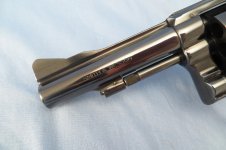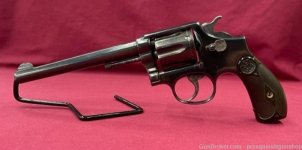SmithSwede
Member
I'm wondering if anyone has some solid data or information about this issue.
Seems to me that the front locking bolt on a S&W revolver doesn't really do anything useful. And that design has a lot of potential downsides. What is the design intent of this? To increase accuracy by making the cylinder stay in place more accurately? To assist with the cylinder rotation and its timing?
I've examined a lot of my S&Ws, and there is a lot of slop or play at the end of the ejector rod. So even if you were able to effectively "lock" the end of the ejector rod in place, that play would still permit the cylinder to flop around--the rod might be locked in place but the cylinder itself would not be.
But even worse, when the cylinder is closed and the ejector rod is supposedly "locked" into place, the amount of play is usually about the same. In other words, the rod isn't really getting locked at all.
Anyone got good data on this?
Seems like somebody might have experimented by removing the front locking bolt and its spring, effectively negating this system, and then tested to see if there was any discernable difference in accuracy or the timing of the mechanism.
Attachments
Last edited by a moderator:


